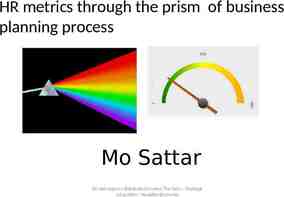Chapter 6 Work and Machines Section 2 – Using Machines
10 Slides614.72 KB

Chapter 6 Work and Machines Section 2 – Using Machines

What is a Machine? In your own words, describe what YOU THINK a machine is How do you think machines make doing work easier?

Making Work Easier A machine is any device that makes doing work easier. Examples of machines include: an engine with many moving parts or a simple machine such as a knife, doorknob or ladder. Machines make doing work easier in 3 ways: Increasing Force Decreasing Force, Increasing Distance Changing Direction

Examples of Making Work Easier

The Work Done by Machines Two forces are involved when a machine is used to do work. Input Force – The force that is applied to the machine (Fin) Output Force – The force applied by the machine (F out)

The Work Done by Machines Work also needs to be considered when discussing machines. There are two types of Work: Input Work (Win) Output Work (Wout) Energy is conserved (not created or destroyed), and so the work/energy that is applied to the machine by you is transferred to the machine. Therefore, the amount of energy that the machine transfers to the object cannot be greater than the amount of energy that was applied to the machine by you. Wout can never be greater than the Win Some work or energy is always transferred in a machine to thermal energy due to friction.

Mechanical Advantage Machines such as a car jack, a ramp, and a crow bar make work easier by making the output force greater than the input force. Mechanical Advantage – The ratio of the output force to the input force of a machine. Mechanical Advantage can be calculated using the following formula: MA Output Force Input Force “Unit” X

Mechanical Advantage To pull a weed out of a garden, you can apply a force of 50 N to the shovel. The shovel applies a force of 600 N to the weed. What is the mechanical advantage of the shovel?

Efficiency Efficiency - the measure of how much of the work put into a machine is changed into useful output work by the machine. A machine that has a high efficiency produces less thermal energy than a machine that has a low efficiency. Efficiency can be calculated using the following formula: Efficiency (Output Work Input Work) X 100 “Unit” %

Efficiency A certain light bulb consumes 200J of electrical energy per second, but only emits 25J of light energy per second. Calculate the efficiency of this bulb.






